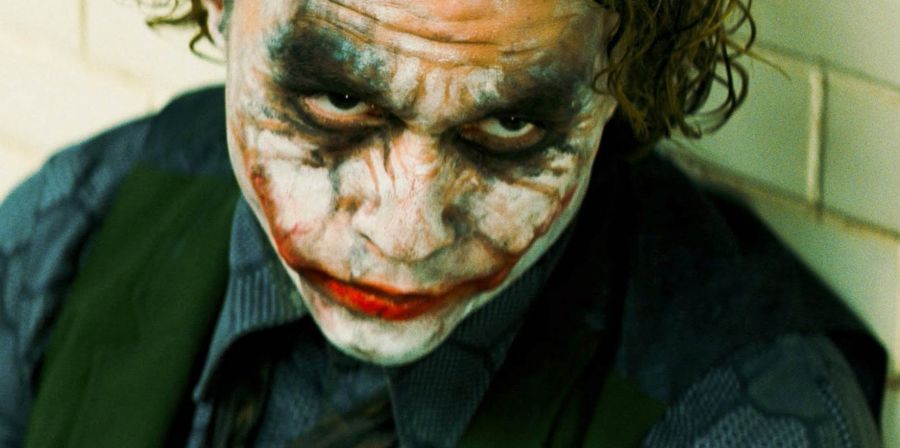

Fool you once, shame on you, fool you twice, joker’s trick … ” Such are the immortal words of the parody account, which tweets utterly fake, chaotic evil Joker-isms with the unhinged zeal of a freshman Dark Knight fan. The account, with its quotes from scenes that never really existed in any film or TV show, is as good an introduction as any into the self-consciously *~*twisted*~* world of As with any enduring comic-book character, Gotham’s Clown Prince of Crime has gone through so many rebirths and reiterations over the decades (between his original DC run, the iconic Adam West TV series, the animated shows, the video games, and the live-action films), that’s it’s hard to believe a line like the above hasn’t already been written. Has it?Joker’s whole shtick — no matter the medium — is that the character is a loopy, confused liar with an ever-shifting backstory. As he quips in the 1988 Alan Moore comic Batman: The Killing Joke, “I mean, what is it with you? What made you what you are? Girlfriend killed by the mob, maybe? Brother carved up by some mugger? Something like that, I bet. Something like that … Something like that happened to me, you know. I … I’m not exactly sure what it was. Sometimes I remember it one way, sometimes another … If I’m going to have a past, I prefer it to be multiple choice!” Indeed, keeping all of the character’s origin stories straight can be enough to drive even the most ardent Batstan into Arkham Asylum or the depths of @jokers_trick. So allow us to lay out the deck for you. Turn up the and dive in to the chemical waste below, because we took this job extremely . Maybe we shouldn’t be surprised that the latest version of the Joker is courting controversy. After all, he’s been doing so for decades. Creators and performers have pushed boundaries with the character, like when he committed a sexually violent act in the 1988 graphic novel The Killing Joke, or when Jared Leto got into character on the set of Suicide Squad by sending his cast mates used condoms. Between these transgressive acts and his overall inclination toward nihilism and anarchy, the Joker has become a potent symbol on the internet for many people who feel isolated from or angry at society. Heath Ledger’s iconic take on the character in The Dark Knight (2008), in particular, has been memeified by anarchists, gamer-gaters, men’s rights activists and incels, his ethos of “let the world burn” inspiring trolls across social media.The 1988 graphic novel The Killing Joke, written by Alan Moore and illustrated by Brian Bolland and John Higgins, offers what many comic-book fans call the definitive origin story of the Joker. We see in flashbacks that the Joker had a wife and family before he was driven to madness. In the present-day, the Joker breaks out of Arkham Asylum and tortures Commissioner Gordon in an effort to prove that even the noblest people can be pushed to evil and madness, just as he was.
In order to taunt Gordon, Joker shoots and paralyzes Gordon’s daughter Barbara, ending her career as Batgirl. He then strips her down and takes naked pictures of her to show to her father.
Feminists have critiqued the story for using Barbara as a plot device to motivate her father and Batman. The sexually explicit way in which Barbara is stripped of her power is particularly disturbing since such torture and humiliation is rarely imparted on male comic-book characters. Years after he wroteOne year after The Killing Joke was published, Jack Nicholson portrayed the hateful harlequin in Tim Burton’s Batman. His interpretation inched even further from Cesar Romero’s campy portrayal in the 1960s Batman TV show, and closer to the ever-darker versions that haunt our screens today.
Nicholson was a brilliant choice for the role, given his talent for expressing eerily manic behavior in movies like The Shining. He played Joker as a man whose brain has gone haywire. That evolution, alone, stirred some controversy among critics. “There was something off-putting about the anger beneath the movie’s violence,” film critic Roger Ebert wrote in a mixed review. “This is a hostile, mean-spirited movie about ugly, evil people, and it doesn’t generate the liberating euphoria of the Superman or Indiana Jones pictures. It’s classified PG-13, but it’s not for kids.”
Decades later, Nicholson’s Joker is largely remembered as an icon in the superhero movie genre, offering a more serious and realistic take on the villain. For better or worse, it is this portrayal that set the template for the versions to come.
